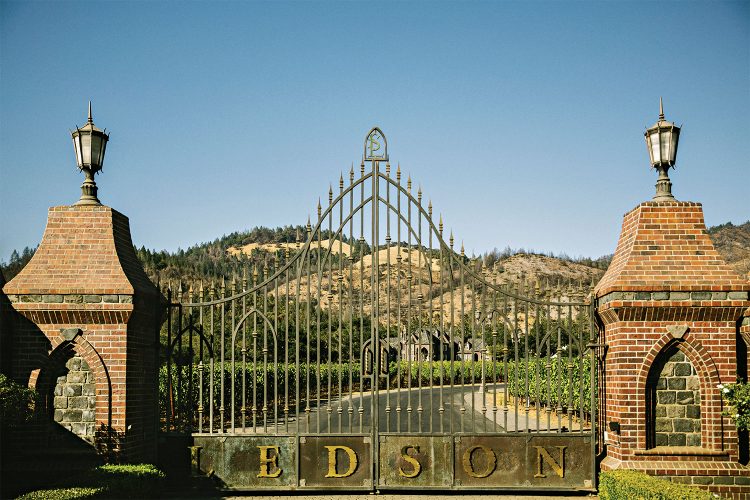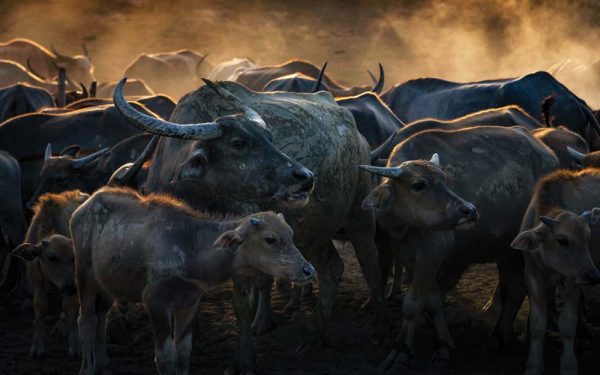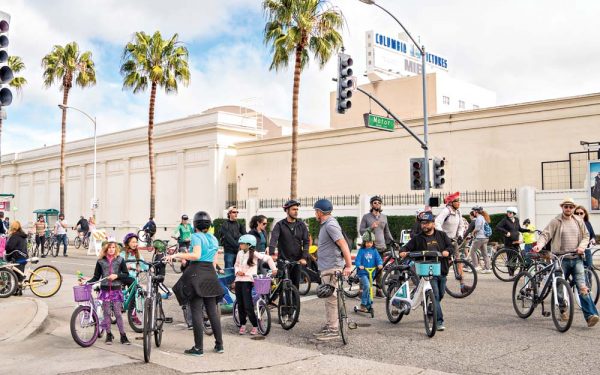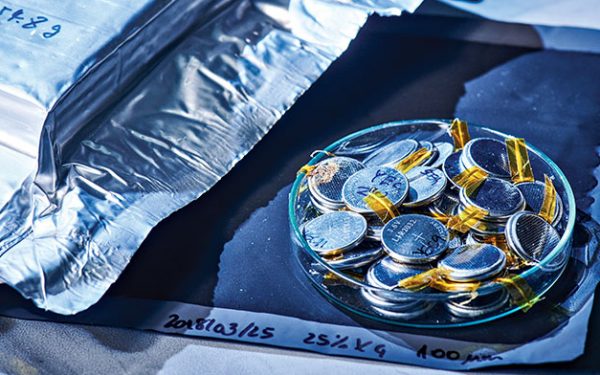Driving along State Highway 12, you cannot miss the signs. “Thank You! First Responders and Dispatch Heroes,” reads one in red, white, and blue; “Sonoma County Strong,” states another. Along this main thoroughfare between Napa and Sonoma are banners posted by a community thankful to those who kept them safe during the devastating October 2017 North Bay fires.
Described as the deadliest and costliest in California’s history, the inferno started on October 8 and raged as 21 major fires, claiming at least 44 lives and thousands of structures, including homes. It took over three weeks to contain the 245,000-acre destruction, which stormed through Napa, Solano, and Sonoma counties – California wine country.
Sonoma took the hardest hit. Its tourism industry is one of the largest, private employers, contributing US$2.1 billion to the economy annually. The backbone? Wine-related tourism, which brings in US$1.2 billion. Furthermore, according to a 2014 study by Sonoma County Winegrowers, in 2012 the region’s wine production generated US$13.4 billion.
While winemaking takes up just 6 per cent of Sonoma’s one million acres – 93 per cent of the county’s 495 wineries were unaffected by the fires – the tragedy weighed heavily on some: In Santa Rosa, Paradise Ridge Winery was destroyed along with its Russian River tasting room (its 15-acre vineyard, outdoor art sculptures, and satellite Kenwood tasting room did survive); the owners of Gundlach Bundschu winery lost their century-old home. Around 85 per cent of the vineyards in Sonoma County are family-run.
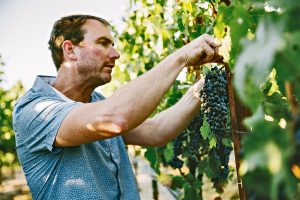
To get to Gundlach Bundschu, the GPS will direct you off Highway 12, onto Denmark Street, then right into a long dirt driveway. Rows of green, leafy vineyards, sunflowers, and sandstone structures greet you prior to your taking to the tasting room on foot. This is California’s oldest family-owned winery, established in 1858, and situated at the intersection of four American Viticultural Areas: Carneros, Napa Valley, Sonoma Valley, and Sonoma Coast. Cooled by the San Pablo Bay and Pacific Ocean breezes, the winery’s Rhinefarm estate specializes in Cabernet Sauvignon, Chardonnay, and Merlot, and believes it has “all the right ingredients to produce the best Bordeaux varietal in California.”
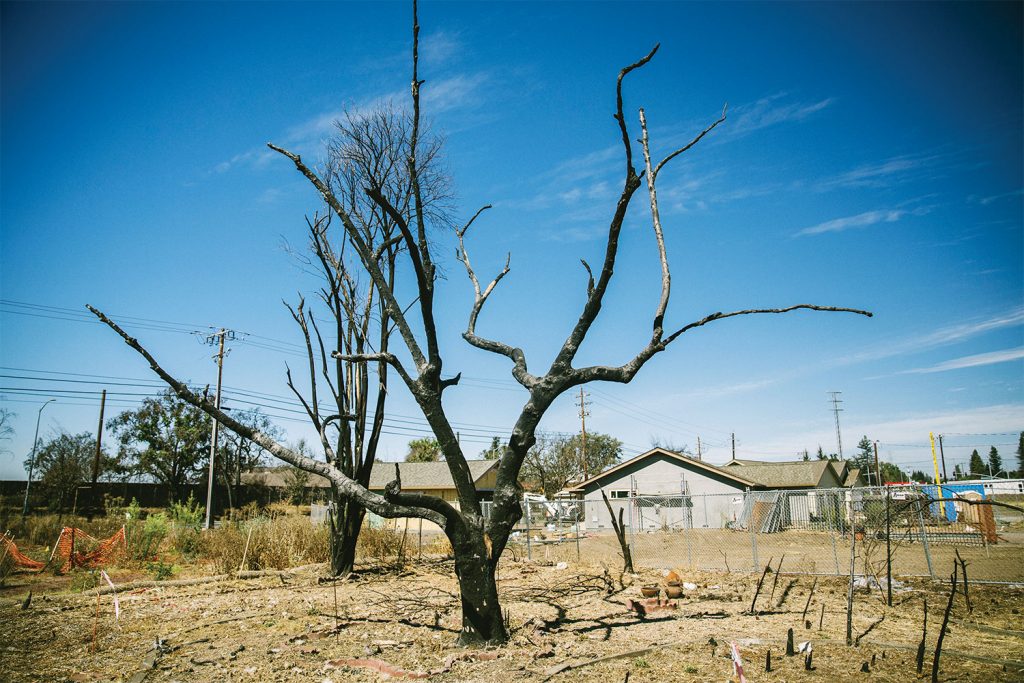
On a weekday in late summer this year, the tasting room was busy pouring Gewurztraminer and Pinot Noir; groups sat at picnic tables overlooking a reservoir. Last October, this outdoor area was the centre of attention for a different reason. Then, helicopters buzzed overhead, filling buckets for water drops to quell the fiery landscape. The resilience of this sixth-generation business was tested; the winery reopened to the public just two weeks later.
The immediacy of digital media sought to predetermine the region’s fate. Wildfire photography ignited dramatic headlines; rumours on social media swirled of wineries burning down, including Chateau St. Jean. This, of course, proved untrue. Visit the Chateau’s grounds today and you’ll see its vineyards flourishing, historic landmark building still standing, and palms swaying, if not singed a little by the flames. Charred hillsides end at the estate’s vineyards, vibrant and inviting. Being live plants, they serve as natural firebreaks, resistant to the flames, surrounded by low-cut grass cover in between and around the vine rows.
Had the wildfires burned earlier, the wine country’s situation would have been direr. The issue of smoke taint – smoke’s impact on the flavour of wine grapes – would have been more widespread. But because of Sonoma’s slow ripening process, its harvest season is later. And here’s the silver lining: damage to harvest was lessened. President of Sonoma County Winegrowers Karissa Kruse stated that in October 2017, already 90 per cent of the wine grape harvest had been completed in Sonoma County, meaning “concern of smoke taint on the grapes currently on the vine is low.”
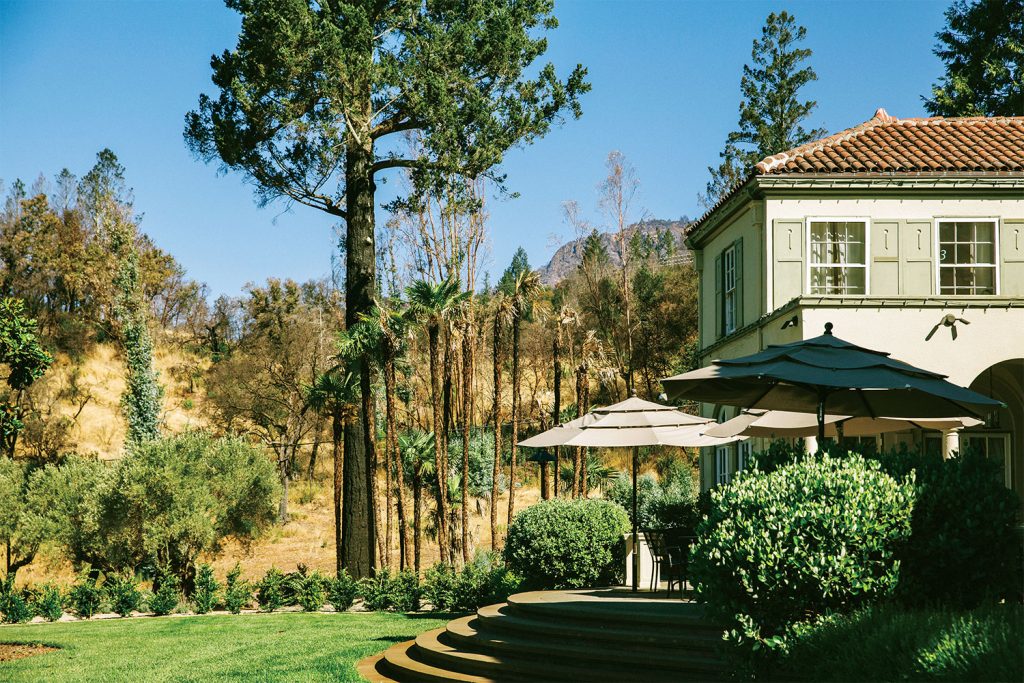
At the time of the fires, the majority of Ledson Winery and Vineyards’ harvest was stored away in a winery warehouse complex in Sonoma, which, unlike its main tasting room in a Gothic castle in Kenwood, was accessible and with power. Ledson’s Australian winemaker Andrew Bilenkij explained that managing individual staff and ensuring that their families were safe was the main concern; also, monitoring the winery’s indoor and outdoor atmospheres, where carbon dioxide was picking up inside, and smoke outside. The remainder of the harvest constituted some Cabernet blocks that were affected by smoke taint and couldn’t be used for bottling. Today the castle stands stoic, busy with visitors thanks to the fire brigade who worked tirelessly to stop it from burning down.
Firefighters from across America and Australia responded to the emergency. Healdsburg, a short drive north of Santa Rosa, is home to the sustainable h2hotel, which provided food and shelter for a community in need. Circe Sher, co-partner of Piazza Hospitality, said that through October 2017, over 150 room nights at their h2hotel were occupied by first responders, including members of the California Department of Forestry and Fire Protection. Together with nearby Hotel Healdsburg, h2hotel donated US$100,000 to both the North Bay Fire Relief Fund and Sonoma County Resilience Fund. Specially priced meals were served in h2hotel’s Spoonbar and Hotel Healdsburg’s Dry Creek Kitchen and Pizzando restaurants.
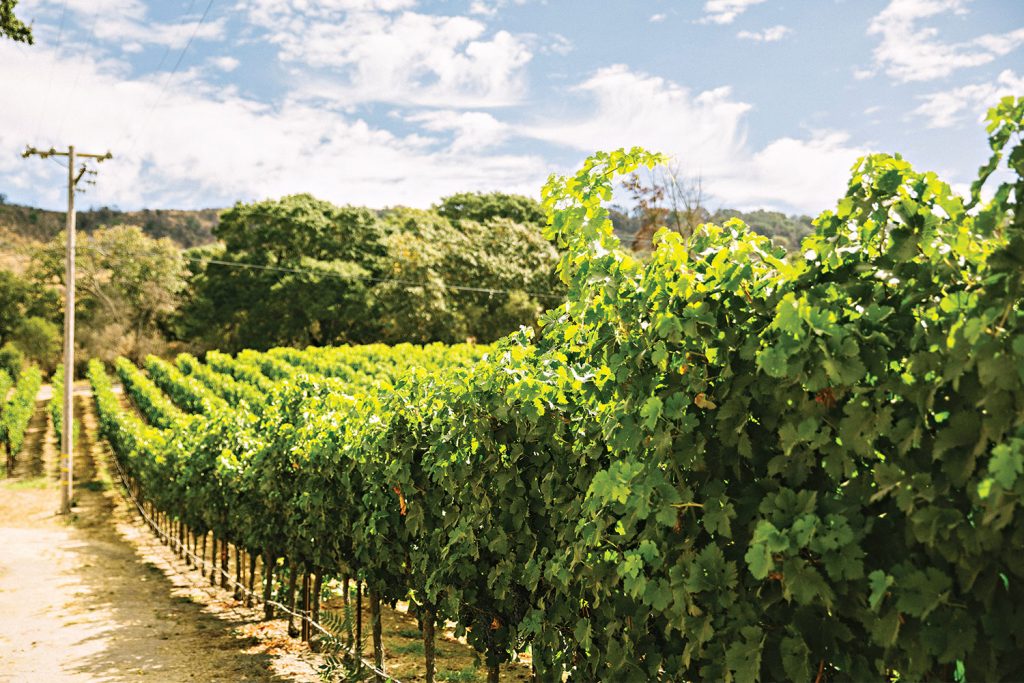
The wildfire blaze has amassed around US$12 billion in insurance claims. While the economic impact to the tourism sector is yet to be determined, the effects were immediate. Many hotels, restaurants, and tasting rooms faced cancellations by those fearing the worst, thinking the wine country was in ruins. This is not the case. Fire scars can be seen on the hillsides, residents are rebuilding homes, and wineries are replanting vineyards; and just as Sonoma kitchens are turning out world-class menus made with top California produce, so too are cellar doors pouring wine produced from the region’s best grapes. On the upside, the region recently enjoyed thriving summer and harvest seasons.
Back in 2014, Sonoma County Winegrowers announced they’d be the nation’s first 100 per cent certified sustainable wine region by 2019. They’re still on track to meet that goal.
WORDS: Marina Kay
IMAGES: Vincent Long

